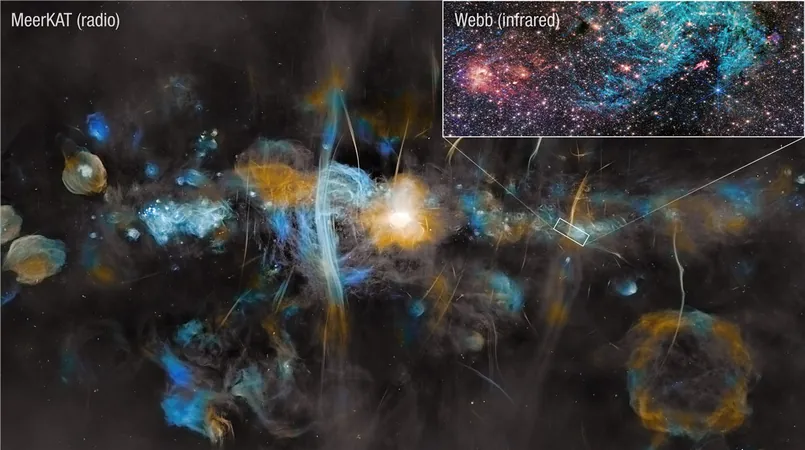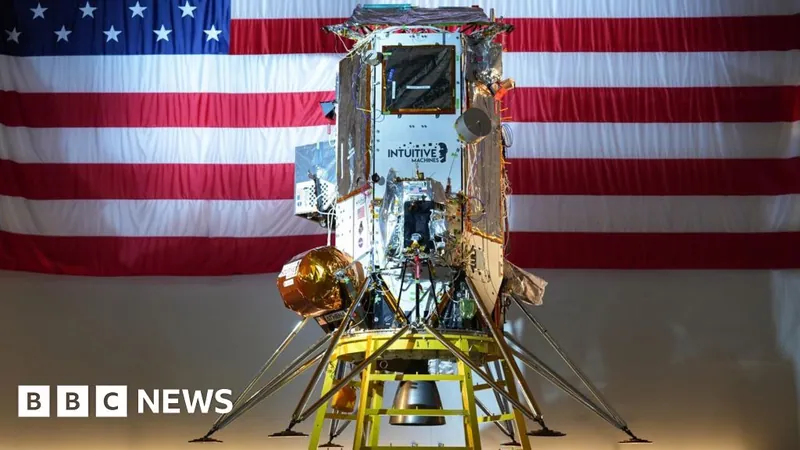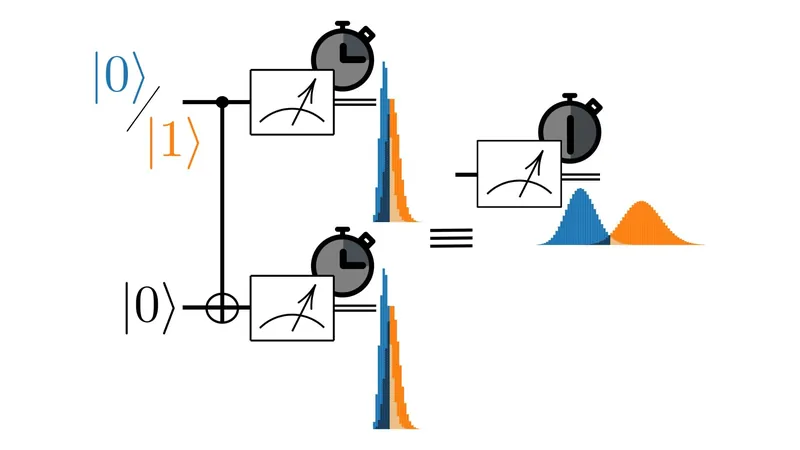
NASA's James Webb Unravels the Secrets of Star Formation in the Milky Way
2025-04-03
Author: Ming
NASA's James Webb Unravels the Secrets of Star Formation in the Milky Way
In a groundbreaking follow-up to a stunning 2023 image of the Sagittarius C stellar nursery, captured by NASA’s James Webb Space Telescope, researchers have made significant strides in understanding the formation of stars under the influence of powerful magnetic fields. These discoveries provide crucial insights into the dynamics of interstellar gas and the life cycle of stars in one of the most dense areas of our galaxy.
Astrophysicist John Bally of the University of Colorado Boulder, a principal investigator in the study, raised an intriguing question: “Despite the abundance of dense gas and cosmic dust—essential ingredients for star formation—why has the Central Molecular Zone of our galaxy seen such limited star births?” The team's findings suggest that strong magnetic fields may suppress star formation, even on small scales, revealing a new perspective on a key astronomical mystery.
Thanks to Webb’s advanced near-infrared technology, astronomers have gained unprecedented access to this crowded and dusty region. "The extreme conditions in the galactic center provide an excellent opportunity to test our theories on star formation,” remarked Samuel Crowe, another principal investigator from the University of Virginia. Crowe, who is a 2025 Rhodes Scholar, emphasized how Webb builds upon important data previously gathered by ground-based telescopes like the Atacama Large Millimeter Array (ALMA) and MeerKAT.
Illuminating the Birth of Massive Stars
Using an array of infrared data sources, including the retired Spitzer Space Telescope and the SOFIA mission, the researchers confirmed that two massive protostars in Sagittarius C are forming, each boasting over 20 times the mass of the Sun. Furthermore, Webb captured striking images of powerful outflows emanating from these developing stellar giants.
Unraveling the formation of lower-mass protostars, still hidden beneath layers of cosmic dust, proved more challenging. However, researchers utilized Webb's cutting-edge data alongside ALMA’s previous observations to identify five potential low-mass protostar candidates. In a remarkable finding, they also discovered 88 distinct features representing shocked hydrogen gas, where material ejected from young stars collides with the surrounding cloud, forming a new star-forming region separate from the main Sagittarius C cloud.
Crowe expressed excitement about this discovery: “This is the first time we’ve confirmed outflows from forming stars in infrared light. It’s a thrilling glimpse into the complexities of star formation—especially in such an enigmatic part of the galaxy.”
The Magnetic Influence on Stellar Ecology
Webb’s images of Sagittarius C reveal numerous distinctive filaments of hot hydrogen plasma. Bally and his team's analysis suggests these structures are sculpted by surrounding magnetic fields, which have previously been detected by ground observatories like ALMA and MeerKAT. The intricate motions of gas, influenced by the immense tidal forces exerted by the Milky Way’s supermassive black hole, Sagittarius A*, play a critical role in amplifying these magnetic fields.
Bally states, “The magnetic forces in the galactic center may inhibit the usual gravitational collapse expected in gas and dust clouds, confining material into the filaments we observe. This might explain why star formation is not happening at the anticipated rates in Sagittarius C.”
Looking ahead, the researchers are set to explore the broader implications of these findings, as the impact of strong magnetic fields on star formation within our galaxy—and beyond—has not been thoroughly examined. This area promises to be fertile ground for future research.
The James Webb Space Telescope, an international collaboration led by NASA, along with the European Space Agency (ESA) and the Canadian Space Agency (CSA), continues to revolutionize our understanding of the universe. As it probes distant worlds and investigates the very foundational structures of our cosmos, Webb stands at the forefront of astrophysical discovery, opening new avenues for understanding our place in the universe.




 Brasil (PT)
Brasil (PT)
 Canada (EN)
Canada (EN)
 Chile (ES)
Chile (ES)
 Česko (CS)
Česko (CS)
 대한민국 (KO)
대한민국 (KO)
 España (ES)
España (ES)
 France (FR)
France (FR)
 Hong Kong (EN)
Hong Kong (EN)
 Italia (IT)
Italia (IT)
 日本 (JA)
日本 (JA)
 Magyarország (HU)
Magyarország (HU)
 Norge (NO)
Norge (NO)
 Polska (PL)
Polska (PL)
 Schweiz (DE)
Schweiz (DE)
 Singapore (EN)
Singapore (EN)
 Sverige (SV)
Sverige (SV)
 Suomi (FI)
Suomi (FI)
 Türkiye (TR)
Türkiye (TR)
 الإمارات العربية المتحدة (AR)
الإمارات العربية المتحدة (AR)